In modern kitchens, one humble tool stands the test of time — the Mortar and Pestle. From its roots in pharmaceutical endeavors to its prominence in contemporary kitchens, this unassuming duo has shaped civilizations and continues to hold its ground. Join me on a journey through the ages as we explore the rich history, versatility, and enduring charm of the mortar and pestle.
Table of Contents
Exploring the Origins:
Originating as pharmaceutical equipment, this dynamic duo took on various forms, ranging from bronze to glass, wood to stone. Etymologically, “mortar” translates to a “bowl for pounding,” while “pestle” embodies a “club-shaped instrument used for pounding and breaking materials.” These words find their linguistic roots in Latin, connecting us to the ancient origins of this timeless tool.
Evolution and Diversity:
Fast forward to the present day, and the mortar and pestle still captivate with their diverse shapes and sizes. A quick online search unveils a myriad of options, from classic granite and marble sets for culinary pursuits to high-end designer versions, showcasing the tool’s enduring appeal. Like a silent witness to the evolution of human civilization, the mortar and pestle remain relevant, proving that certain classics never go out of style.
Antiquity’s Testimony:
Archaeological findings dating back 35,000 years attest to the mortar and pestle’s timeless utility. This ancient tool, born from the primal instinct to pound foodstuff in stone, predates even the advent of agriculture. Revered as a “rare example of stable technology,” it spans continents, finding a place in the hands of Greeks, Romans, Aztecs, native American Sioux, Indo-European Celts, and Egyptians. The Egyptian Ebers Papyrus, the oldest medical text on earth, immortalizes its significance, while 14th-century Italian frescoes and the writings of Roman poet Juvenal further elevate its status.
Mortar and Pestle in Medicine:
Venturing into the realm of medicine, we discover the indispensable role of the mortar and pestle in pharmacies and apothecaries. Pharmacies boast extensive collections, and the tool’s importance in pharmaceutical history is highlighted by the National Pharmacy Museum. Chemists and pharmacists, past and present, have employed small porcelain sets to perform trituration, an essential step in preparing medicines. Even Walgreen’s, a prominent drugstore chain, immortalized the mortar and pestle in its 1951 logo.
Culinary Delights:
Beyond the confines of pharmacies, the mortar and pestle have found a cherished place in kitchens worldwide. If you’ve ever relished table-side guacamole at a Mexican restaurant, you’ve witnessed the magic of the molcajete, the Spanish version of this indispensable tool. Crafted from volcanic stone and passed down through generations, the molcajete is a staple in Mexican households. Its unique ability to release essential oils makes it a prehispanic blender, ideal for creating flavorful salsas. You can easily procure an authentic molcajete on Amazon, a testament to its timeless appeal.
Famous Molcajete
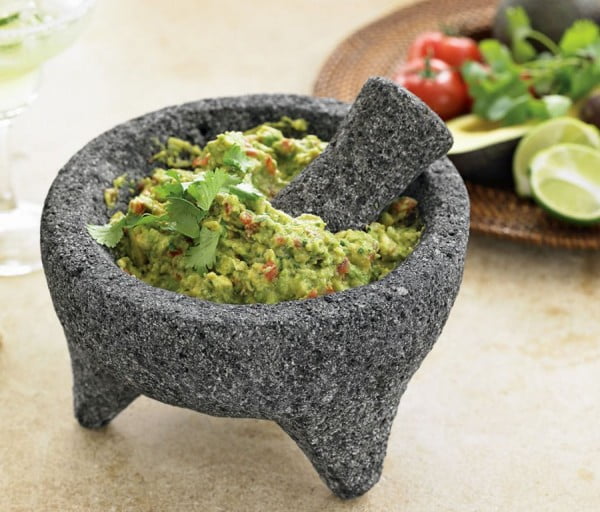
Spanish for mortar and pestle is “molcajete.” The terms “seasoning” and “bowl,” which are Aztec in origin, are the source of the name. But conventional molcajetes aren’t quite like your typical mortar and pestle. The rock used to make these tools is volcanic. In addition to making blending and mixing simpler, their firm, rough surface guarantees that the flavours of the spices be intensified.
This traditional method of cooking preserves the flavour of our food and is a testament to its age. Many Mexican homes still have a molcajete in them. Recipes that have been handed down over the years have been cooked using it. A lot of people think that utilising this equipment enhances the flavour of typical Mexican dishes like guacamole and salsa.
How to season Mortar and Pestle (Molcajete)
Types of Mortar and Pestle
1. Brass Mortar and Pestle:
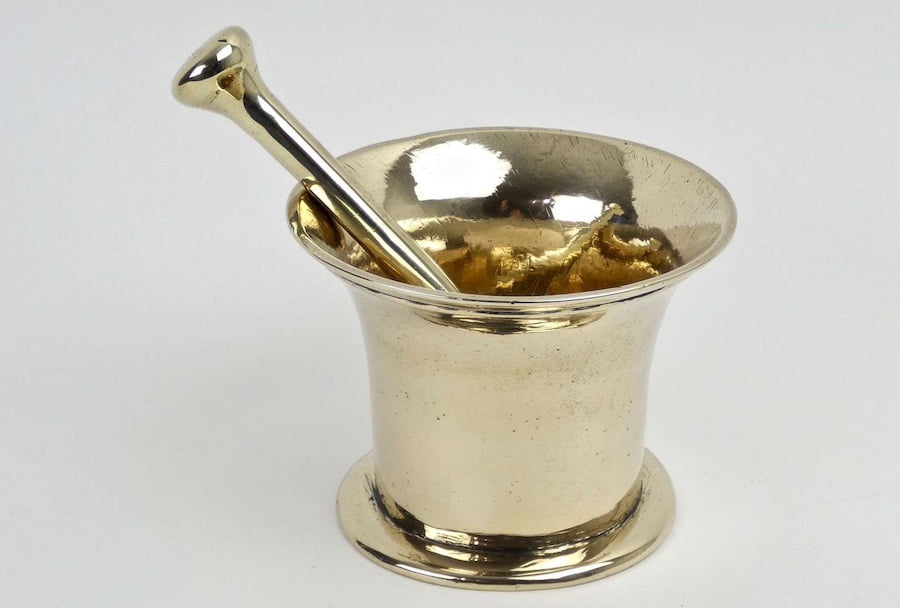
Characteristics: Durable, corrosion-resistant, adds a touch of elegance to the kitchen.
2. Granite Mortar and Pestle:
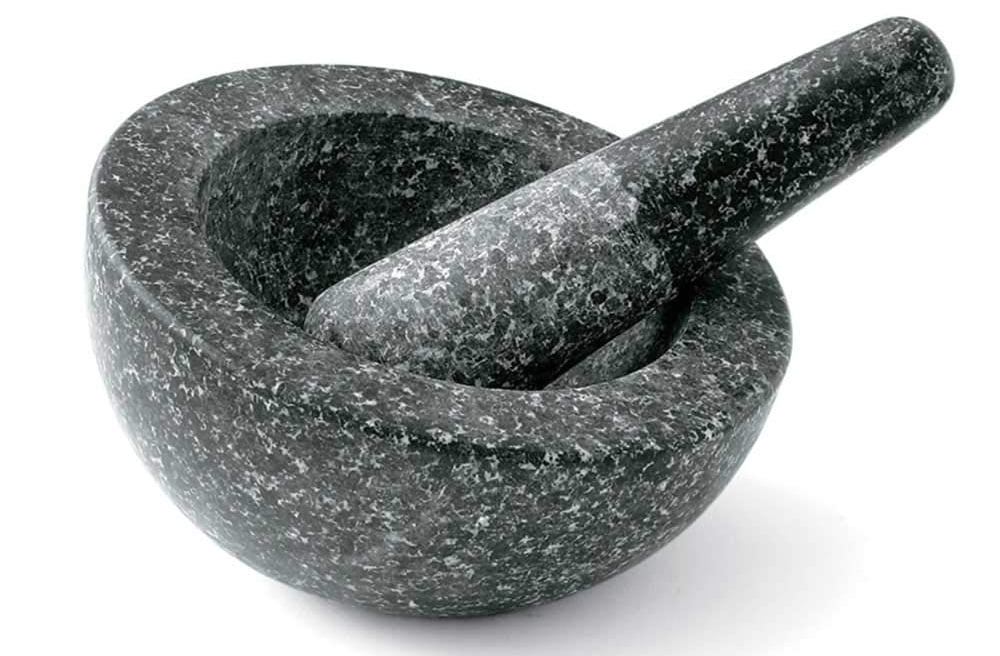
Characteristics: Heavy-duty, excellent for grinding spices and herbs, retains natural coolness.
3. Marble Mortar and Pestle:
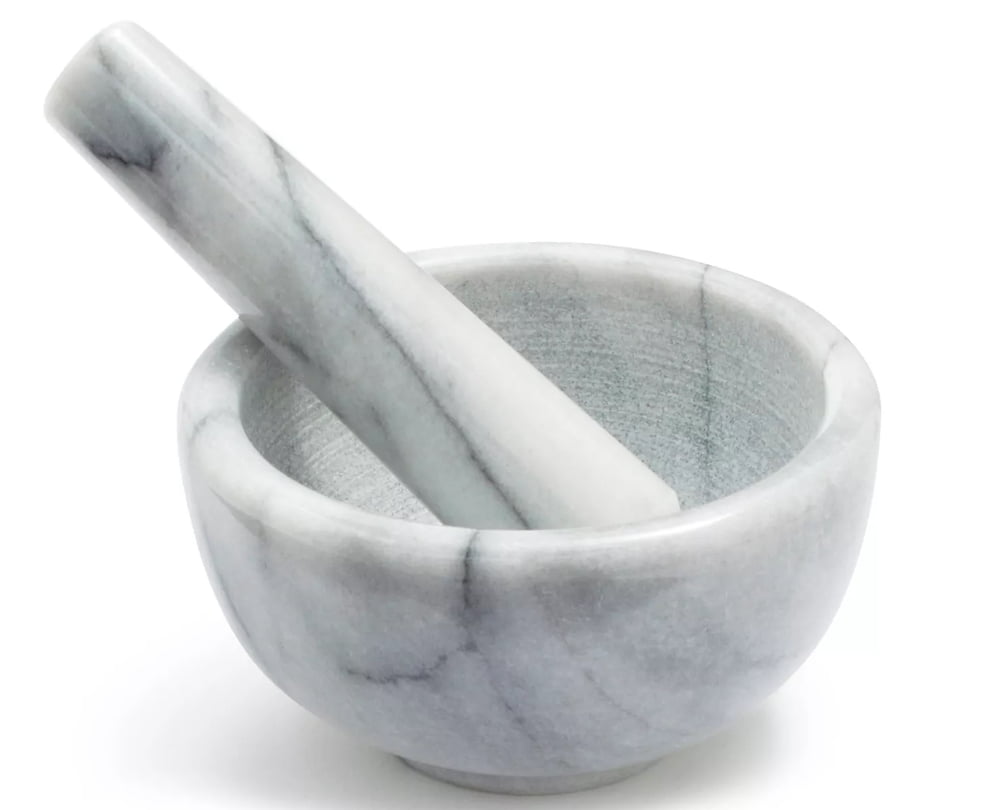
Characteristics: Sleek and stylish, ideal for lighter grinding tasks, and aesthetically pleasing.
4. Japanese Mortar and Pestle:
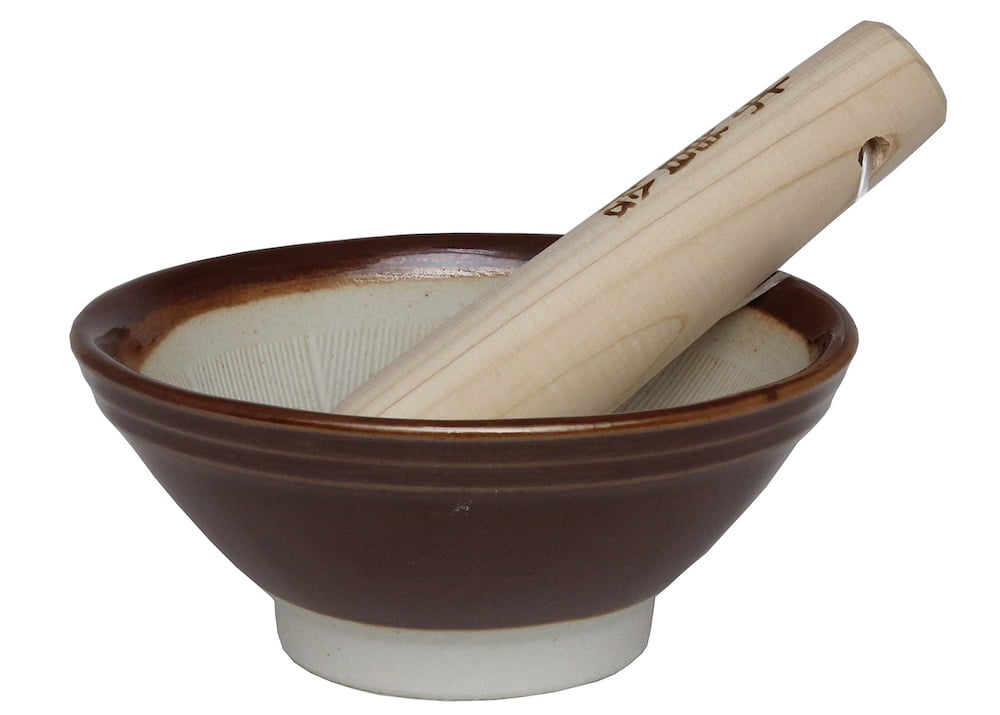
Characteristics: Crafted with precision, suitable for grinding delicate ingredients in Japanese cuisine.
5. Indian Mortar and Pestle:
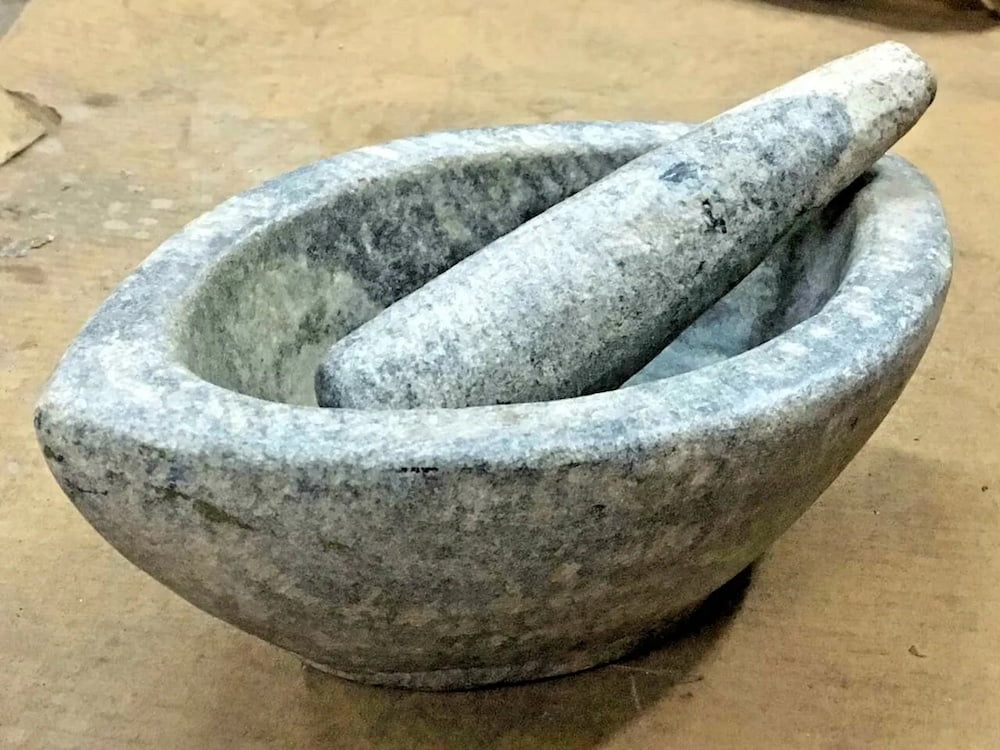
Characteristics: Diverse designs, used for grinding spices in Indian cooking, reflect cultural traditions.
6. Spanish Pestle and Mortar:
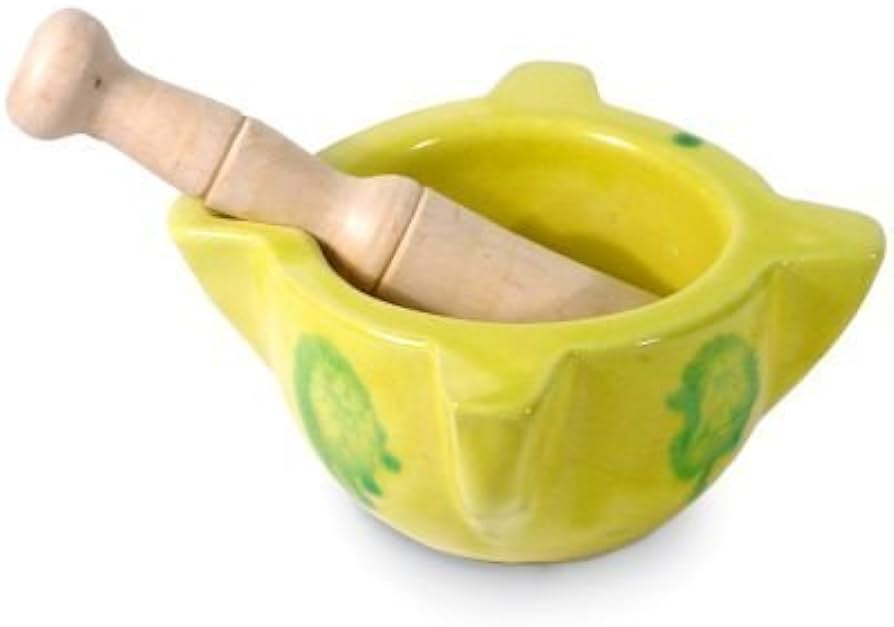
Characteristics: Often ornate, adds a touch of Spanish flair to the kitchen, suitable for various grinding tasks.
7. Stainless Steel Mortar and Pestle:
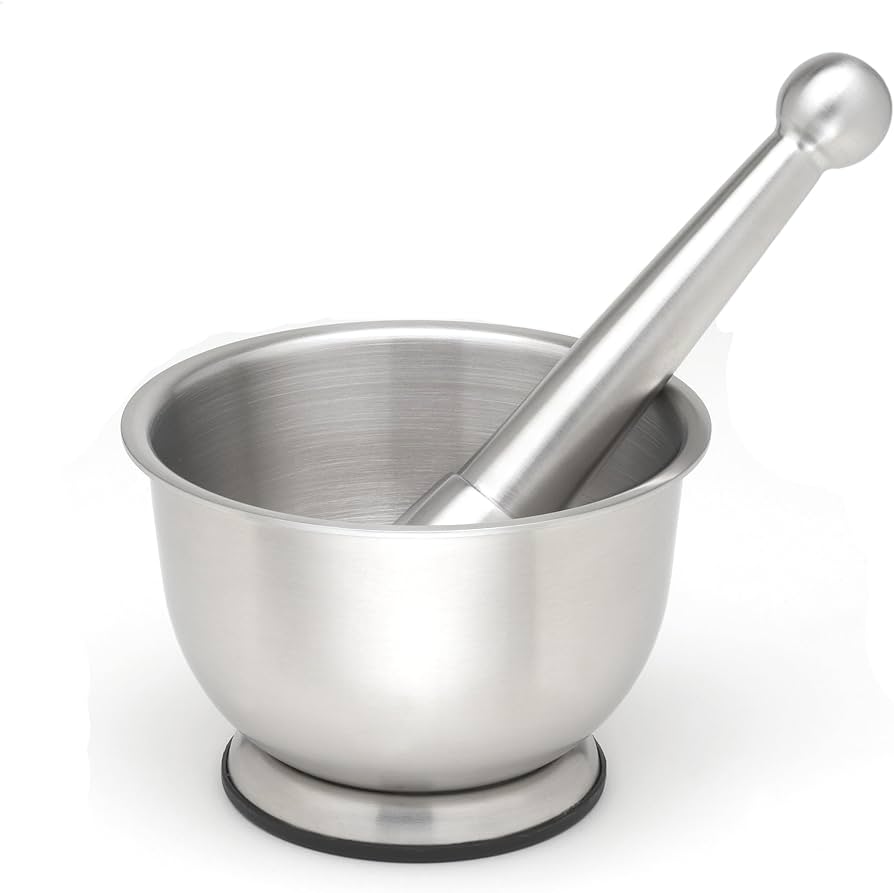
Characteristics: Modern and sleek, durable, easy to clean, suitable for heavy-duty grinding.
8. Wooden Mortar and Pestle
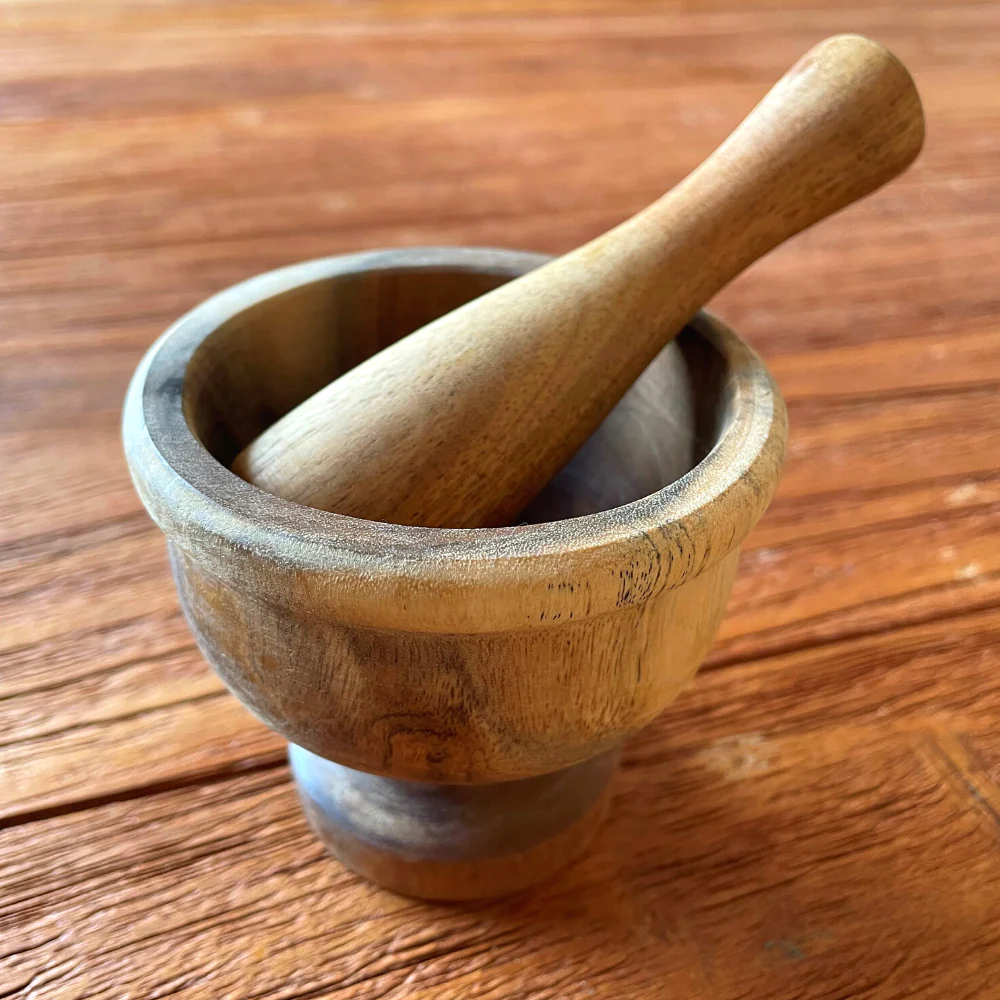
Characteristics: Classic and rustic, provides a natural aesthetic, absorbs and imparts subtle flavours, ideal for grinding herbs, seeds, and spices, and requires occasional seasoning for optimal performance.
Conclusion:
In conclusion, the mortar and pestle stand as more than just kitchen tools; they are conduits to our past, connecting us to ancient civilizations and pharmaceutical traditions. As we continue to embrace modern advancements, the mortar and pestle remain steadfast, reminding us that the simplest tools often possess the most enduring charm. So, the next time you grind spices or create a culinary masterpiece, take a moment to appreciate the timeless magic held within the mortar and pestle, a testament to their unrivalled significance throughout the ages.

